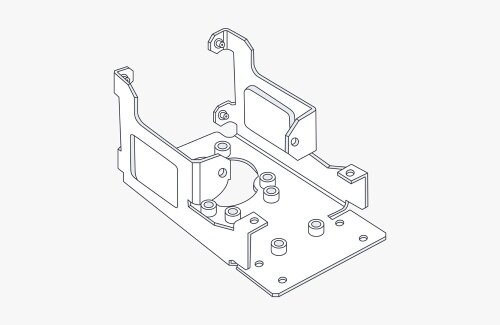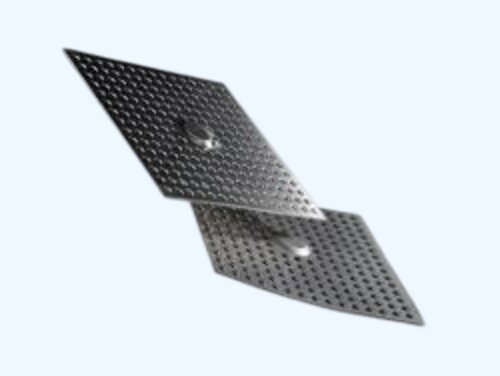Choosing the proper manufacturing process isn’t always easy. Each project has its own needs. Some require high precision and complex designs, while others focus on faster production and lower costs. CNC machining and sheet metal fabrication both have unique advantages that impact how parts are manufactured and their overall performance.
This article examines the primary differences between these two methods, focusing on their processes, materials, and performance. You’ll learn how selecting the proper method can improve quality, save time, and make production more efficient from prototype to final product.
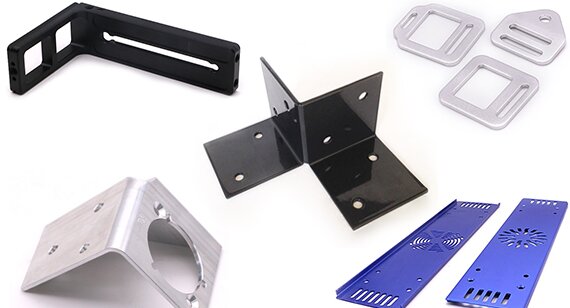
What is CNC Machining?
CNC machining is a process that removes material from a solid block to form a part. It begins with a piece of metal or plastic and removes material step by step, revealing the final shape. The machine works by following digital instructions from a CAD model and a CAM program. These programs guide the cutting tool’s path, showing exactly where and how to move.
Typical operations include milling, turning, drilling, and tapping. Milling uses rotating tools to cut material. Turning spins the workpiece while a stationary tool shapes it into round forms. Drilling makes clean, accurate holes. This high level of control allows CNC machining to produce consistent parts with excellent accuracy, even for complex designs.
Key Materials for CNC Machining
CNC machines are compatible with a wide range of materials, offering flexibility in both performance and appearance. Metals such as aluminum, stainless steel, brass, titanium, and copper are often used for their strength and durability. Aluminum is a lightweight and corrosion-resistant material, making it a popular choice for various industries. Stainless steel handles heat and stress well, making it an ideal choice for demanding applications.
Plastics like ABS, nylon, POM (Delrin), and PTFE (Teflon) are also popular choices. They are helpful for parts that need insulation, low friction, or chemical resistance. The best material depends on what the part will do, how strong it needs to be, and how much it should cost.
Strengths and Advantages of CNC Machining
CNC machining provides outstanding precision and consistency. It can reach tolerances as tight as ±0.005 mm, which is ideal for parts that must fit together perfectly. It can also handle complex shapes that would be difficult or impossible to make by hand.
Surface finish is another strength. Machined parts often come out smooth, reducing the need for extra finishing work. The process is also flexible—programs can be easily changed for design updates or small production runs, supporting both prototypes and full-scale manufacturing.
CNC machining also works well with tough materials that can’t be easily bent or stamped. It produces strong, solid parts without the need for welding or joining. This makes it dependable for applications that require strength, precision, and durability.
Limitations and Considerations
Despite its precision, CNC machining may not always be the fastest or cheapest choice, especially for large volumes or thin sheet parts. Because it removes material instead of shaping it, there can be more waste.
Tool wear is another factor. Cutting hard metals like titanium can wear tools more quickly, resulting in higher maintenance costs. Complex parts may also require multiple setups or specialized tools, which can increase production time and costs.
Designers should pay attention to wall thickness and geometry. Deep pockets or thin sections are harder to machine. Keeping the design simple and planning efficient toolpaths can help reduce cost and improve turnaround time.
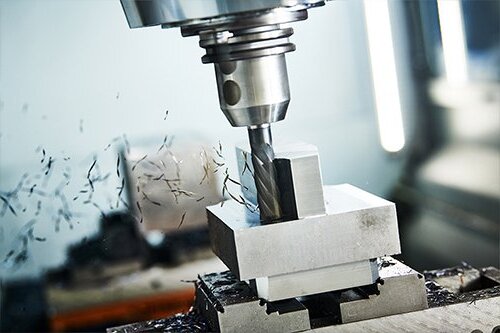
What is Sheet Metal Fabrication?
Sheet metal fabrication is a process that shapes metal rather than removing it. It starts with a flat sheet that is cut into the desired shape using tools such as laser cutters, plasma cutters, or turret punches. Once the parts are cut, they are bent into form using press brakes or folding machines.
When the design requires more complex structures, parts can be joined together through welding, riveting, or fastening. After assembly, surface finishes such as powder coating, anodizing, or plating may be applied to protect the metal and improve its appearance.
Materials Commonly Used in Sheet Metal Work
Sheet metal fabrication utilizes various materials, selected based on their strength, weight, and environmental considerations.
- Steel: Strong and long-lasting, ideal for industrial or structural parts.
- Stainless steel: Resists rust and provides a clean appearance, making it suitable for use in food, medical, and outdoor products.
- Aluminum: Lightweight and easy to shape, it is ideal for parts that require corrosion and heat resistance.
- Copper and brass are often used for decorative or electrical applications.
- Galvanized steel: Steel with a zinc coating for better protection in humid or outdoor environments.
Benefits and Advantages of Sheet Metal Fabrication
Sheet metal fabrication offers flexibility for both prototypes and mass production. It enables quick design adjustments and seamless scaling from small batches to large quantities. Since the process forms rather than removes material, it minimizes waste and keeps production costs lower.
The method also supports a wide range of finishes, helping manufacturers balance function and style. Modern laser cutting and CNC bending machines provide excellent accuracy and repeatability. Complex assemblies can be completed quickly with little need for special tooling.
Formed parts have strong, continuous surfaces and rigid edges, which improve their structural strength. This helps them perform well under heavy loads, vibration, or repeated use.
Drawbacks and Challenges
Sheet metal fabrication also has its limits. It is not the best choice for thick or solid parts, or for shapes with deep internal features. It works best for uniform wall thickness and simpler designs.
During bending, marks or impressions may appear on the surface, requiring polishing or finishing for visible parts. Achieving tight tolerances can be more challenging compared to CNC machining, especially in very small or detailed areas.
Custom tooling can raise setup costs when the design is unique. Engineers must also account for bend allowances and material springback to ensure accurate dimensions. Careful planning helps maintain precision while controlling costs and production time.
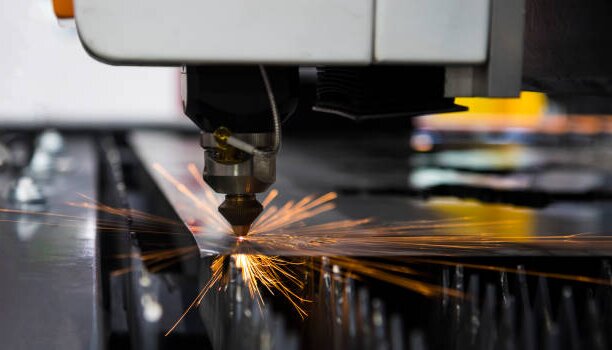
CNC Machining vs Sheet Metal Fabrication: What is the Difference?
Understanding the differences between CNC machining and sheet metal fabrication enables you to select the most suitable process for your project. Each method has its own advantages in terms of cost, precision, material usage, and production speed.
Cost Implications and Analysis
CNC machining usually costs more. Since it cuts material away from a solid block, a large portion of the raw material becomes waste. This makes it expensive when using costly metals like titanium or copper. Programming, setup, and tool wear also add to the overall cost, which can make it less efficient for large-volume production.
Sheet metal fabrication is often more affordable for bigger runs or lighter parts. It uses material efficiently, with minimal waste. Cutting and bending take less time than machining detailed 3D shapes, lowering both labor and machine time. For many production jobs, this makes fabrication the more cost-effective choice.
Dimensional Capabilities and Tolerances
CNC machining provides very high precision. It can reach tolerances as tight as ±0.005 mm, which is ideal for parts that require perfect alignment or fit. It also handles complex features, such as holes, threads, and deep cavities, that are difficult to achieve with forming methods.
Sheet metal fabrication is generally accurate, but within wider tolerances. The bending and forming process naturally causes minor variations due to material springback or internal stress. Engineers take these changes into account when designing, ensuring parts still meet functional needs.
Material Properties and Performance
CNC machining works with a wide range of materials, including metals, plastics, and composites. Because it removes material without applying heat or pressure, it keeps the material’s original strength and density. This makes it perfect for solid, high-strength parts that must handle heavy loads or stress.
Sheet metal fabrication primarily utilizes metals that can be easily cut and formed, including aluminum, stainless steel, and mild steel. Although the parts are thinner, they gain strength from bends and folds that increase stiffness. This makes fabricated parts lightweight but strong enough for use in enclosures, panels, and structural components.
Production Speed and Lead Times
Sheet metal fabrication is usually faster, especially for multiple identical parts. Modern machines can cut and bend sheets in just minutes. Once a flat pattern is created, it’s easy to scale production with little setup time.
CNC machining takes longer because each part is made individually. The process includes programming, setup, and gradual cutting, which increases production time—especially for complex shapes. However, it allows quick design changes and is excellent for prototypes that require testing or adjustment.
Design Flexibility and Complexity
CNC machining offers greater design freedom. It can produce detailed 3D parts, deep pockets, and smooth contours that are difficult or impossible to make with forming processes. It’s ideal for mechanical parts, housings, and precision components with tight geometries.
Sheet metal fabrication is best for designs made from flat patterns with bends and folds. It works well for boxes, casings, and brackets that combine strength with light weight. However, designers must adhere to specific guidelines, such as maintaining a minimum bend radius and uniform thickness, to ensure quality and consistency.
| Category | CNC Machining | Sheet Metal Fabrication |
|---|---|---|
| Process Type | Subtractive manufacturing (material is removed) | Formative manufacturing (material is cut, bent, and formed) |
| Material Usage | Higher material waste due to cutting from solid block | More efficient use of material, less waste |
| Cost Efficiency | Higher cost for large runs; ideal for low-volume or precision parts | More cost-effective for medium to large batches |
| Precision & Tolerances | Extremely tight tolerances (±0.005 mm possible) | Good precision but with wider tolerances due to forming |
| Suitable Materials | Almost any machinable material (metal, plastic, composite) | Metals that can be bent or formed (steel, aluminum, stainless steel) |
| Part Strength | Solid and dense; ideal for load-bearing parts | Lightweight yet strong with formed reinforcements |
| Production Speed | Slower cycle times, especially for complex parts | Faster production and shorter lead times |
| Design Flexibility | Can produce complex 3D geometries and detailed features | Best for flat or folded designs like boxes, panels, and brackets |
CNC Machining vs Sheet Metal Fabrication: Selecting the Right Process
Each project has different priorities. Some focus on accuracy and complexity, while others aim for speed and cost savings. Comparing both processes by cost, volume, design, and function helps you determine which one best fits your needs.
Cost
CNC machining usually costs more. The process is more time-consuming, requires additional materials, and necessitates regular maintenance of tools. Each part needs its own setup, which adds time and expense. Due to this, CNC machining is best suited for high-precision parts or smaller production runs.
Sheet metal fabrication, by contrast, is more cost-effective for large batches. Once the cutting and bending programs are ready, production moves quickly with little added cost per part. Material use is efficient, and automation further reduces labor costs.
For large-scale projects, fabrication offers a lower cost per unit. Machining, however, delivers excellent value when precision or complex shapes are the main goals.
Volume
Production quantity plays a significant role in choosing the correct method. CNC machining is well-suited for low- to mid-volume production, particularly when flexibility and precision are more important than speed. It allows quick design changes without needing new tools or dies.
Sheet metal fabrication performs better in medium to high-volume runs. Once the setup is complete, each part can be made quickly and consistently. Automated laser cutters and press brakes can handle large quantities efficiently while maintaining accuracy.
When you need fast turnaround and scalability, fabrication is the stronger choice. When you need flexibility and detailed precision, machining is the better option.
Design
CNC machining provides designers with greater creative freedom. It can produce deep cavities, fine threads, and detailed 3D shapes. These capabilities make it ideal for parts that require tight fits, strong mechanical performance, or complex geometries.
Sheet metal fabrication works best for designs that can be laid out as flat patterns before forming. Bends, folds, and flanges add strength without adding extra material. This makes it ideal for lightweight yet sturdy components such as enclosures, panels, and brackets.
If your design involves thick solid parts or detailed internal features, machining is the better fit. If it’s based on thin walls and formed shapes, fabrication is the more intelligent choice.
Function
A part’s purpose often determines which process works best. CNC machining produces solid, rigid parts that can handle heavy loads and precise assembly. It’s frequently used for fixtures, housings, and connectors that must meet exact dimensional requirements.
Sheet metal fabrication focuses on lightweight structures that still provide strength and protection. It’s ideal for covers, frames, and support parts that require strength without being overly heavy. Formed bends add stiffness, helping the parts hold shape under stress.
When accuracy and durability are the main goals, machining is preferred. When weight reduction and cost efficiency are priorities, sheet metal fabrication offers a better balance.
Conclusion
CNC machining and sheet metal fabrication both play vital roles in modern manufacturing. CNC machining offers high precision, robust parts, and the capability to produce complex shapes, making it ideal for low-volume or intricate projects. Sheet metal fabrication, in contrast, delivers faster turnaround, efficient material use, and lower costs for larger or lightweight components.
The best choice depends on your project’s design, material, and production goals. By understanding how each process performs, you can create parts that meet your quality standards while staying within budget.
Seeking guidance on selecting the ideal approach for your next project? Upload your drawings or 3D CAD files today. Our engineering team will analyze your design for manufacturability, cost, and lead time—and send feedback within 24 hours.
Hey, I'm Kevin Lee

For the past 10 years, I’ve been immersed in various forms of sheet metal fabrication, sharing cool insights here from my experiences across diverse workshops.
Get in touch

Kevin Lee
I have over ten years of professional experience in sheet metal fabrication, specializing in laser cutting, bending, welding, and surface treatment techniques. As the Technical Director at Shengen, I am committed to solving complex manufacturing challenges and driving innovation and quality in each project.

